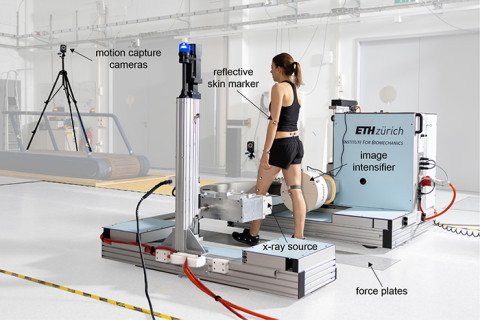News Joint Study with ETH Zurich on Knee Movements Wins ISB Clinical Biomechanics Award
The ETH Zurich study led by first author Dr. Barbara Postolka has won the ISB Clinical Biomechanics Award. Schulthess Klinik was also involved in the award-winning study through our research associate, Dr. sc. ETH Renate List as well as our Human Performance Lab. Congratulations to everyone involved!
The award-winning study formed part of the dissertations submitted by Dr. Barbara Postolka and Dr. Pascal Schütz of ETH Zurich. Dr. sc. ETH Renate List, a research associate at Schulthess Klinik’s Human Performance Lab, was the supervisor and co-examiner for both dissertations and also co-authored the award-winning study. Also involved in the study were Prof. Bill Taylor of ETH Zurich, Prof. Dr. med. Sandro Fucentese of Balgrist University Hospital and PD Dr. med. Peter Koch of Kantonsspital Winterthur.
The International Society of Biomechanics (ISB) presents the award to a single study every two years. To be eligible, the study must both describe and include a form of biomechanical analysis of a clinical problem.
Comparing the movements of knee prostheses and natural knees
In order to increase the treatment success of and thereby patient satisfaction with knee prostheses, it is important to know which mechanisms yield satisfactory or unsatisfactory results. The study on “Tibio-femoral kinematics of natural versus replaced knees – A comparison using dynamic videofluoroscopy” compares the movement of three different designs of knee prostheses with natural knee movements during demanding everyday activities such as descending stairs and walking downhill.
Measurements were taken using a mobile fluoroscope, making it possible to directly record extremely accurate measurements of the movements of the knee and knee implants during walking. The various prosthetic designs showed characteristic movement patterns, but none were able to reproduce every aspect of the movements of the natural knee. The results will provide a basis for improving implant design. Comparing the movements of knee prostheses and natural knees could also make it possible to select custom implants in future.
We are delighted to be able to contribute to the ongoing improvement of knee implants through a collaborative research project such as this, and would like to congratulate everyone involved on their award.
- Information about the ISB Clinical Biomechanics Award
- Information on the Laboratory for Movement Biomechanics research group at ETH Zurich
- PhD doctoral thesis: “Natural Knee Kinematics – The Role of Limb Alignment and Activity on Knee Joint Motion”
- PhD doctoral thesis: “Towards improving joint replacement: Which characteristics of design and activity govern joint kinematics in total knee arthroplasty?”

